Hawaii
The Big Island
Larger than Maui,
the Big Island has similar
geography and climate, influenced
by tall mountains, trade winds,
and the Pacific Ocean.
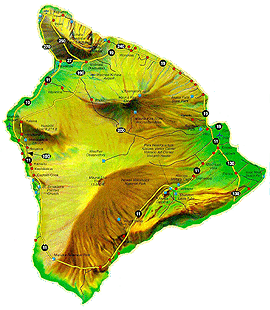
|
Hawaii The Big Island
|
 |
Hawaiian Heritage
|
The Big Island has several restored historic sites, giving us a glimpse
of early Hawaiian life.
|
|
Hale o Keawe: A reconstruction of a temple and mausoleum which
housed the bones of 23 ali'i. |
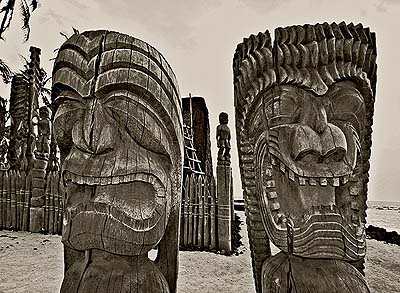 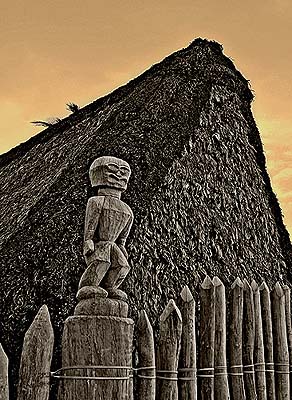 |
|
Ki'i (wooden images) stand guard over Hale o Keawe. |
| The arrival of Christian missionaries in the 19th century brought great change to the old Hawaiian ways. In 1819, Kamehameha II abolished traditional religious practices and many of the old religious sites were destroyed or abandoned. Christian churches were built, many of which remain today. One of the most unusual and beautiful is St. Benedict's Painted Church on the hillside above Kealakekua bay (of Little Grass Shack fame). A self-taught artist, Father John Berchmans Velghe painted the interior walls of the church (c.1900 -1904). Restored in 1985 and 2002, the church interior was returned to its original glory. | |
|
|
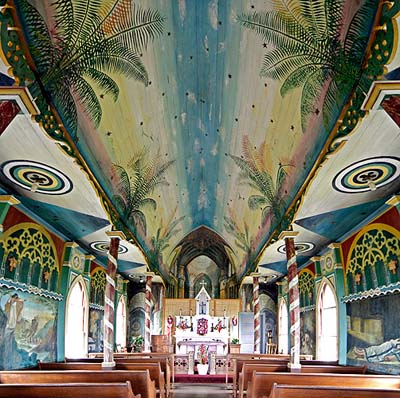 |
|
St. Benedicts, from the graveyard |
The interior that gives the "painted church" |
| Another picturesque church is St. Peter's, along the west coast just south of Kailua-Kona. This tiny chapel, nestled among towering palms, is called the most photographed church in Hawaii. | 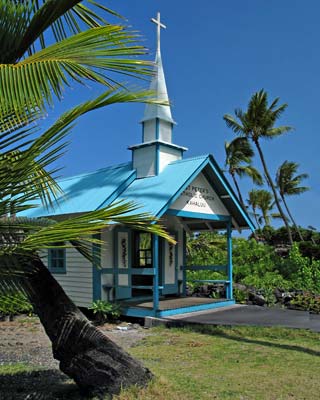 |
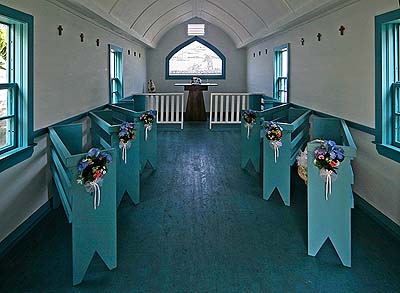 |
|
|
The interior, decked out for a wedding. |
|
Kilauea - the Active Volcano
| One of the biggest attractions on the Big Island is Volcanos National Park. In the
words of the Park Service, "The park encompasses diverse environments that range from sea level to the summit
of the earth's most massive volcano, Mauna Loa at 13,677 feet. Kilauea, the world's most active volcano, offers
scientists insights on the birth of the Hawaiian Islands and visitors views of dramatic volcanic landscapes." Kilauea is the prime tourist attraction. Unfortunately, in 2005 the active lava flows were several miles from the road and visible mainly at night. There remain, however, numerous interesting areas with steaming craters and fantastic lava flows. |
||
|
|
||
|
The Kilauea summit caldera. |
||
 |
The Halema'uma'u Crater, located within the summit caldera. |
|
|
Fresh lava pouring into the ocean creates a beautiful but dangerous steam cloud. The fumes contain hydrochloric acid |
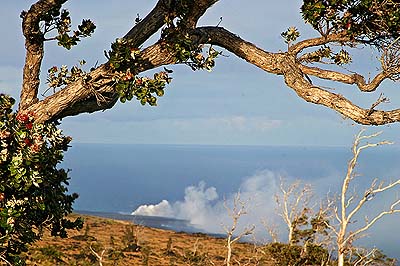 |
|
|
|
Old lava flows form a fascinating landscape. |
|
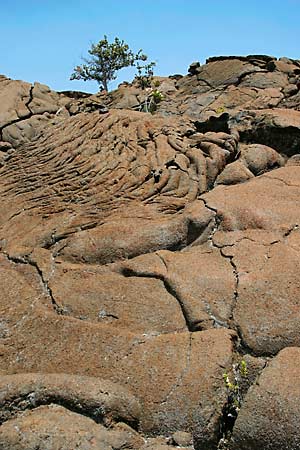 |
||
|
|
||
|
|
||
| Even on the Big Island, you're never more than a short drive from the expected palm trees and ocean. | |
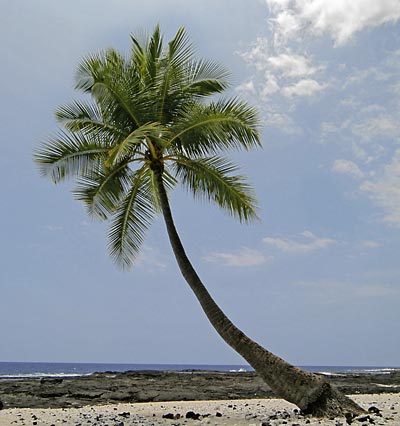 Sometimes the perfect lone palm. |
|
|
|
|
|
Sometimes reflected in a quiet lagoon. |
Sometimes against a threatening sky. |
|
At the end of the day, a spectacular sunset through the Norfolk pines. |
|
|
|
|
 |
 |